Dr. Paul Janssen
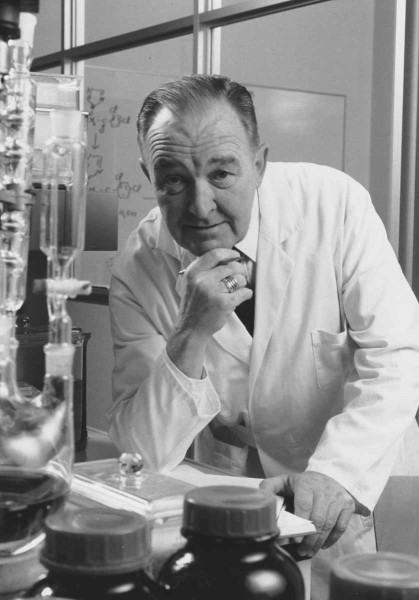
September 12 marks the birthday of one of the most remarkable people in Johnson & Johnson history, and one of the giants in the history of pharmaceutical medicines: Dr. Paul Janssen. During his lifetime, he was the world’s most prolific discoverer of new medicines, and he helped change the course of drug development in the 20th century.
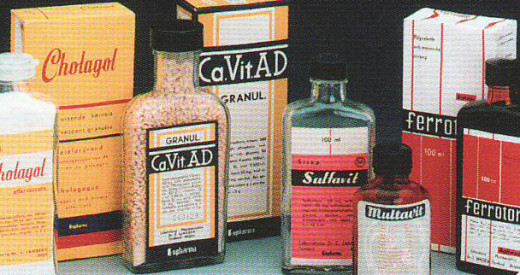
Dr. Paul, as he was known, was born on September 12, 1926 in Turnhout, in northern Belgium. His father, Dr. Constant Janssen, was a physician and family doctor who began to import and distribute products from Gedeon Richter, a Hungarian pharmaceutical company named after its founder. By 1938, the business had grown to such an extent that the senior Dr. Janssen gave up his medical practice and devoted himself entirely to the business. His son Paul was eager to follow in his father’s footsteps, but instead of continuing in his father’s business, he decided to take the unprecedented step of developing an independent research lab of his own. It soon became apparent that young Paul Janssen was a distinctive and original thinker. In 1989, looking back on his decision, Dr. Janssen recalled:
“ ‘I had this idea of starting a research laboratory which in those days was a funny idea. Everybody thought it was silly, and I was only 26. They assumed I really didn’t know what I was talking about.’ ” [Breakthrough, The Discovery of Modern Medicines at Janssen, by Harry Schwartz, The Skyline Publishing Group, New Jersey, 1989, p. 22]
But the future Dr. Paul Janssen knew exactly what he was talking about. While still a medical student, Janssen had an insight that would fuel the innovation behind his research lab: he became convinced that the discipline of chemistry would be of increasingly vital importance in medicine. Many medicines at the time were combinations of existing compounds. Paul Janssen realized that the future of pharmaceutical medicine would be in developing original, new compounds, and he decided that he would do exactly that. As a medical student, Janssen understood that there had to be a connection between a substance’s chemical structure and its pharmacological action. That undertanding would provide the groundwork for research at the company he went on to found: synthesizing chemical structures to find the connections between their pharmacological structure and their activity. [Breakthrough, The Discovery of Modern Medicines at Janssen, by Harry Schwartz, The Skyline Publishing Group, New Jersey, 198, p. 14]
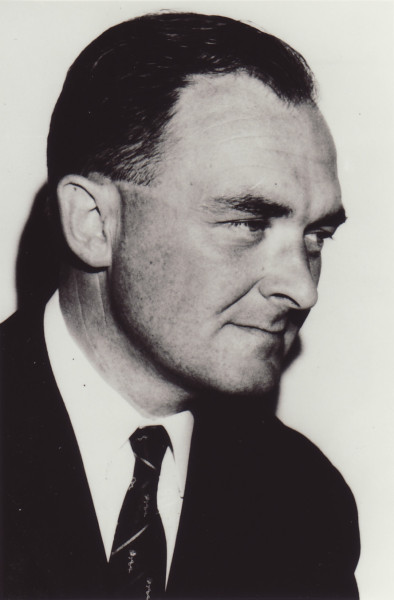
In 1948, when he was just 21, Paul Janssen took a leave from medical school to spend six months in the United States to continue his studies at Cornell Medical School, Harvard, the California Institute of Technology, and more. He also visited companies to see pharmacological research in action. In 1953, after finishing his education and passing all of his exams with highest honors, Dr. Paul Janssen decided it was time to begin his research laboratory. He set up a small research lab on a shoestring budget on the third floor of his father’s company in Turnhout. Janssen’s earliest employees were a diverse group of scientists and researchers from across Europe – men and women. For Dr. Paul, the most important qualities he looked for in his colleagues were common sense, a desire to work, inquisitiveness, and an open mind for innovation.
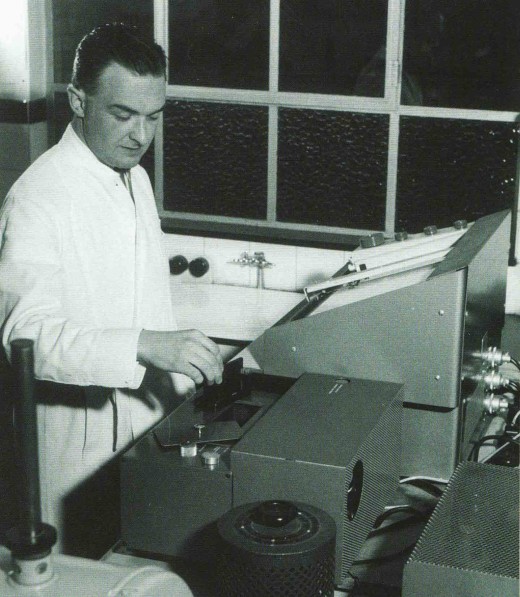
Beginning in 1953, the tiny research lab began synthesizing compounds. It grew into Janssen Pharmaceutica N.V., synthesizing and developing a steady stream of compounds, many of which became crucially important medicines. Over the course of the company’s history, Dr. Janssen and the Janssen scientists have discovered more than 80 medicines, many of them significant and pioneering. Today, eight medicines from Janssen are on the World Health Organization’s List of Essential Medicines.
In 1961, Janssen Pharmaceutica was acquired by Johnson & Johnson, bringing to the company Janssen’s strong capabilities in the growing field of pharmaceutical medicines. For Dr. Paul Janssen, the global reach of Johnson & Johnson would enable him and his colleagues to help more patients. For both organizations, which shared the same values, it was the perfect fit.
In 1985, Dr. Paul Janssen helped establish the first Johnson & Johnson operating company – and the first Western health care company -- in China, Xian-Janssen Pharmaceutical Co., Ltd.
Dr. Janssen is also known for his role in helping preserve the legendary Xian Warriors, a World Heritage treasure. By the early 1990s these priceless terracotta statues from the tomb of China’s first emperor were being endangered by fungi that threatened to destroy them. Dr. Janssen led the efforts to help preserve these archaeological treasures with antifungal medicines from Janssen Pharmaceutica, helping set up a lab on-site to aid in the preservation. Today, the company continues to work with museums to help in their ongoing preservation.
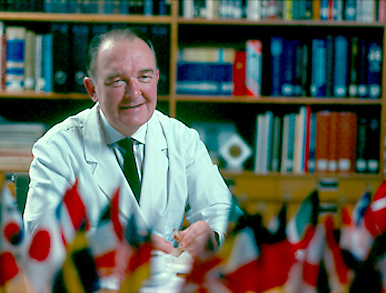
Active and engaged until the end, Dr. Paul Janssen passed away in 2003 at the age of 77 while attending a scientific conference in Rome, Italy. The tiny little research lab he started in the 1950s had grown to be one of the most innovative and respected pharmaceutical organizations in the world, saving and improving the lives of countless numbers of patients.
Dr. Paul By the Numbers
Dr. Paul Janssen was the holder of more than 100 patents. He received 22 honorary doctorates worldwide, and was an honorary member of over 30 scientific institutes and organizations. He authored or co-authored more than 850 scientific publications and held more than 500 scientific presentations all over the world. A genius with a prodigious memory, he remained humble and down to earth, stating “ ‘I am not a genius but merely a man who has had a lot of luck in his life.’ “ [Dr. Paul, published by Janssen Pharmaceutica, English text published 1993, p. 42]
Five Things You Didn’t Know About Dr. Paul
1. Dr. Paul Janssen had the astounding and remarkable ability to visualize, design and rotate in his head the structures and molecules for the compounds he was developing. (Legendary inventor Nikola Tesla had the same ability when developing his mechanical inventions.)
2. He played the piano and was a good singer.
3. He could quote verses from Homer in Ancient Greek.
4. He was an avid chess player. At the beginning of his 1948 student trip to the U.S., Dr. Paul played chess so well that he won enough money at the Manhattan Chess Club to cover the entirety of his travel expenses.
5. Like Fred Kilmer, Dr. Janssen was interested in history and liked to read about it.
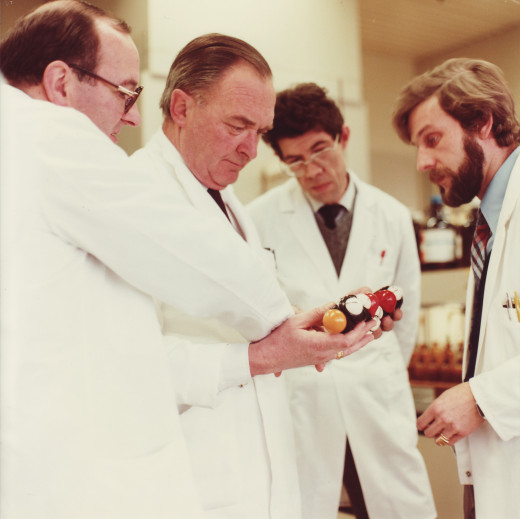
Dr. Paul Janssen is known throughout Johnson & Johnson for two quotes: “What’s new?” (Which he asked daily of research scientists in the Janssen labs), and his most famous quote,“The patients are waiting.” Here are a few more quotes from Dr. Janssen:
“The human mind is like a parachute. It works best when it is open.” [Dr. Paul, published by Janssen Pharmaceutica, English text published 1993, p. 42]
“Many people are capable of doing much more than they believe.” [Dr. Paul, published by Janssen Pharmaceutica, English text published 1993, p. 44]
“Research workers must stimulate one another intellectually. Research must be their hobby. What is nicer than being able to earn your living by practicing your hobby?” [Dr. Paul, published by Janssen Pharmaceutica, English text published 1993, p. 46]
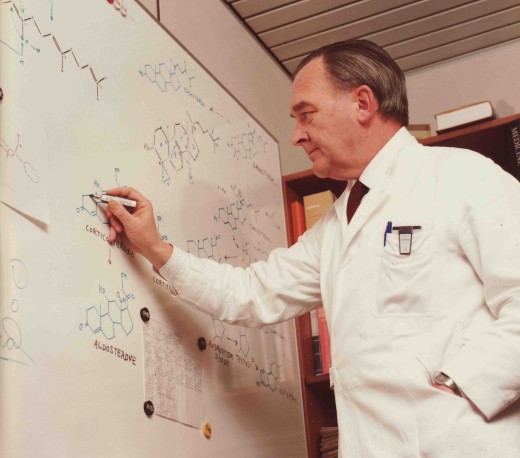
Over the course of his long career, doing what he loved best, Dr. Paul Janssen and the organization he created changed the course of the development of pharmaceutical medicines and saved lives throughout the world. When Dr. Janssen created his research lab in the 1950s, he did it largely on his own. Today, remembering Dr. Paul’s legacy, the Johnson & Johnson Innovation Centers around the world help scientists engaged in early stage innovation to realize their dreams – and enable the next generation of innovators to continue on the path of saving and improving lives set by Dr. Paul Janssen more than 60 years ago.

Its clear from this article that we, the current employees of J&J, stand on the shoulders of giants like Dr Paul and Fred Kilmer. And I am sure Dr Paul would be pleased that the spirit of innovation he invoked is alive and thriving at J&J.
What a fascinating person Dr. Paul must have been.
Great article about a great man thanks for sharing!!
It was great to read about the variety of accomplishments from Dr. Paul Janssen. Piano and chess are two great skills using both visualization and strategy. There are many important building blocks to becoming a great scientist and inventor.
Good article, but I'm very interested in knowing the 8 medicines mentioned in this statement: "Today, eight medicines from Janssen are on the World Health Organization’s List of Essential Medicines."
Thank you,
Paul
In reply to by Paul
Hi Paul,
The link to the list can be found at this page on the WHO website: http://www.who.int/selection_medicines/list/en/
Margaret
The stories of Dr. Paul never fails to inspire me regardless of how many times I've heard or read them. Plus, there are always new things to learn about him!!